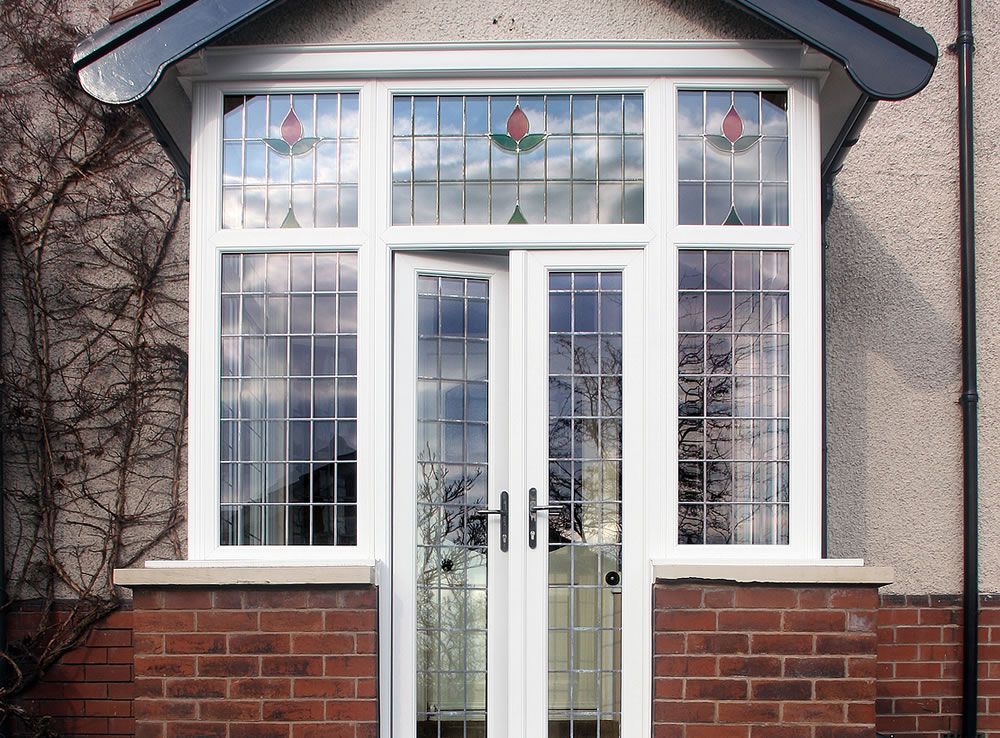uPVC windows have long been the go-to choice for homeowners and developers alike, valued for their durability, energy efficiency, and low maintenance. But while once, they were simply considered a functional element of home design, they’ve undergone quite the transformation over recent years and have gone on to become the go-to choice for luxury abodes.
Thanks to a lavish makeover, they now tick all of the right boxes when it comes to both performance and aesthetics, cementing their position as the favoured window option amongst high-end home owners and property developers alike. Driven by advances in manufacturing techniques, evolving consumer tastes, and a growing emphasis on sustainability and energy efficiency in the luxury market, they’ve been on quite the journey since their early days.
Here, we take a look at their intriguing rise to prominence.

From utility to elegance
Unplasticised polyvinyl chloride, or uPVC first became a popular material for windows and doors back in the 1980s – but it certainly wasn’t because of the windows’ visual appeal. Rather, it was their impressive resistance to weathering, corrosion and rot, which meant that they were considered a cost-effective and durable option for homes in all climates.
Offering excellent insulation, they also help to keep homes warmer in the winter and cooler in the summer, and their ability to keep energy bills down was another huge plus, particularly at a time when the UK was in financial crisis.
But one place you’d have been unlikely to have seen them at that time, or for a long time afterwards, was in a luxury home, because they were largely seen as a budget option and there were other far more aesthetically pleasing choices for those with the freedom to spend on the very finest. Their standard white frames and somewhat utilitarian appearance were functional but not particularly stylish, which meant that those with a keen eye for design and larger budgets to play with were likely to opt for alternatives that were more in keeping with high-end homes’ designs.
But as manufacturers began to explore new methods of enhancing the appearance and versatility of uPVC windows, they slowly began to shed their initial reputation and catch the eyes of designers and architects when it became clear that choosing them for their functionality no longer had to mean compromising on style.

The new face of uPVC
New design options and customisation features breathed new life into uPVC windows over the years, and whilst their transformation was gradual at first, it soon began to gather momentum. Fast forward to today, and they are now available in a diverse array of colours, styles and finishes, making it simple to find uPVC window options that will blend seamlessly with a range of different design aesthetics. From traditional to the thoroughly modern, luxury homes now increasingly feature styles like those with a woodgrain finish that mimics the appearance of natural timber, offering the classic elegance of wood without the associated maintenance issues and available in various different shades. Wood-framed windows might look good, but are unfortunately prone to issues like rot and weathering, so these uPVC alternatives make it possible to get the same look but with the durable characteristics of this robust and reliable material instead.
But if that doesn’t fit in with the architectural design of a property, standard frames in a range of colourways are all options that might – from sleek anthracite grey or sophisticated black, to bold, bespoke shades. Now, there’s a seemingly endless amount of choice that once would have been unimaginable, offering unmatched versatility that allows designers and homeowners to create a cohesive look that complements the overall aesthetic of any high-end property.
Design-wise, we’ve also seen some changes in uPVC windows since the early days, with slimmer profiles that offer a more streamlined and modern look, allowing for larger panes of glass and increased natural light. It’s a style that lends itself well to the modern minimalist trend that is so prevalent in luxury homes these days, and makes them an even more desirable choice.

Tech innovations
The integration of advanced technology into modern uPVC windows has also been something of a game changer, with many now equipped with high-performance glazing that offers superior energy efficiency, sound insulation, and security. In our modern age, high-end homeowners and designers aren’t just seeking windows that look good and perform well, but that are also made with sustainability in mind, and thanks to triple glazing, low-emissivity coatings, and argon gas filling between panes, uPVC windows fit the bill and are now considered a greener choice than many other types.
As consumers become more environmentally conscious, the demand for eco-friendly building materials has also surged, and with uPVC being fully recyclable, it’s now widely considered a top sustainable choice for windows and doors.
The bottom line
Combining style, functionality, sustainability and of course, the latest tech innovations, it’s easy to see why uPVC windows have become the stand-out choice for luxury homes, and their dramatic transformation from budget-friendly and functional to a luxurious design element has seen their image well and truly transformed.






















